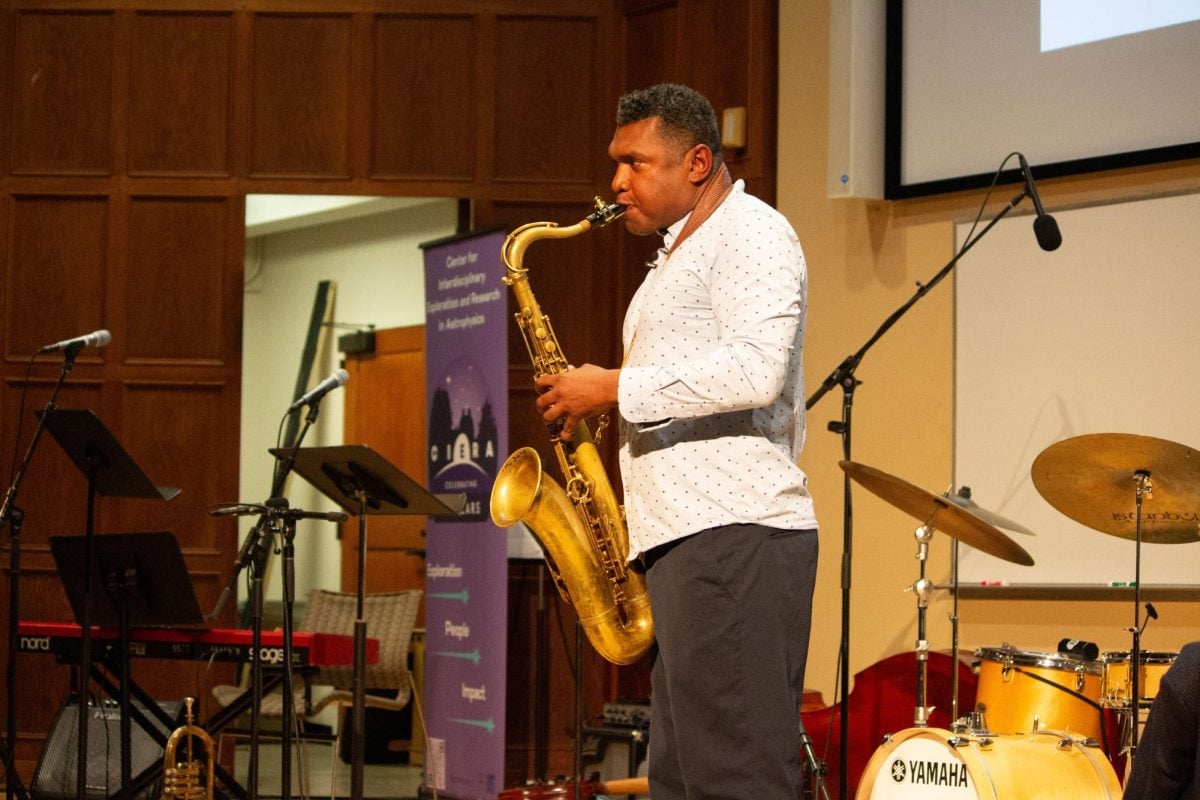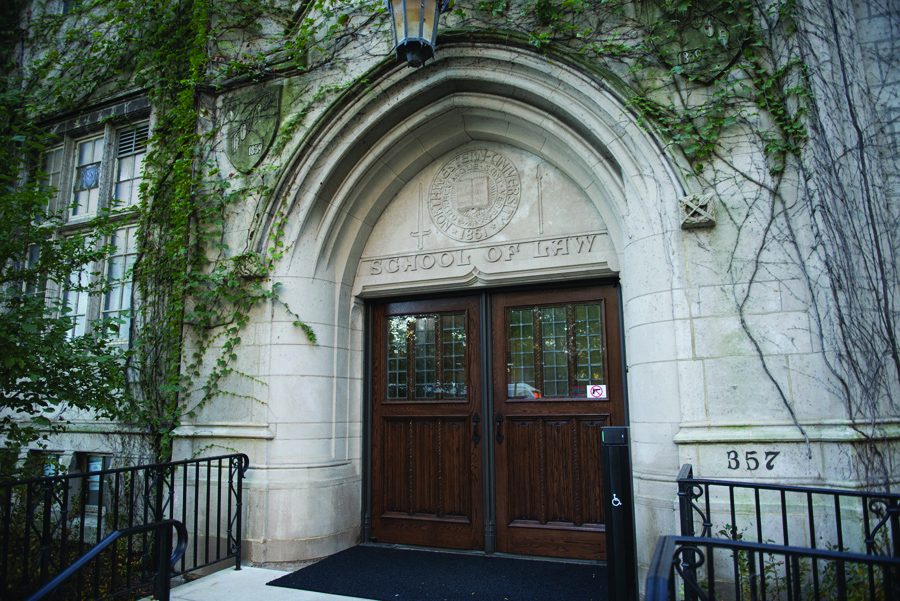Brown University physics Prof. Stephon Alexander spoke on how the analysis of musical elements can help astrophysicists understand patterns of the universe in his lecture “The Jazz of Physics” Thursday night.
Alexander was invited by the Center for Interdisciplinary Exploration and Research in Astrophysics to speak at its 15th anniversary public lecture at Lutkin Hall.
The event opened with a jazz performance by Star Eyes Initiative, featuring physics and astronomy Ph.D. student Darsan Swaroop Bellie’s original compositions inspired by Alexander’s book “The Jazz of Physics: The Secret Link Between Music and the Structure of the Universe.”
Following the performance, Alexander explained how specific musical concepts could be used to unlock new ways of understanding the universe.
“When an astrophysicist sees patterns, we want to understand those patterns,” Alexander said. “How did this chaotic early universe become us?”
Alexander explained that the frequencies of musical notes distinguish their pitch from one another, creating their respective signatures. By finding the resonance frequencies in the vibrations of the universe, he said, astrophysicists are able to uncover key details about the universe’s history.
“If I analyze this data in terms of soundwaves, I should be able to learn things about the universe — for example — how big it was at that time,” Alexander said. “By finding the resonance frequencies, it should also reveal what the universe was made up of.”
Alexander connected improvisation to quantum mechanics. Just as jazz musicians consider many paths to get from one note to the next, quantum particles consider all possible trajectories between two points, he said.
Attendee Rich Ramberg (Bienen and McCormick ’04) said his interest in both music and physics brought him to the lecture.
“It’s great to see this crossover between art and science,” Ramberg said. “People think, ‘Well, one’s creative, one’s analytic and concrete,’ but really, they’re interwoven.”
As a jazz musician himself, Alexander said much of his desire to explore both music and physics stems from saxophonist John Coltrane’s passion to understand music’s connection to the world.
“As a person who was trying to find my way as a person interested in music and the sciences, Coltrane inspired me to think that maybe it’s OK to not be inside a box,” Alexander said.
Alexander joined the Star Eyes Initiative on saxophone for their closing tunes. One composition, titled “Orbits,” included repetitive motifs that symbolized the orbits of planets.
CIERA implements music, AI and the arts and humanities to engage communities in physics research.
“We plan outreach for high school students,” physics and astronomy Ph.D. student Hailin Wang said. “We’re combining AI and machine learning with physics.”
Alexander said the goal is to discover whether the modern universe holds a deeper musical metaphor.
“The ultimate improvisational system is the universe,” Alexander said. “And we are being played by it.”
Email: AliceOh2027@u.northwestern.edu
X: @AliceeOhh
Related Stories:
— Brandon Harper takes on Chicago area jazz venues, music as self-expression
— The annual LEON FORREST Lecture Series is back with a jazzy adjustment
— Northwestern to develop $20 million AI institute for astrophysics research






